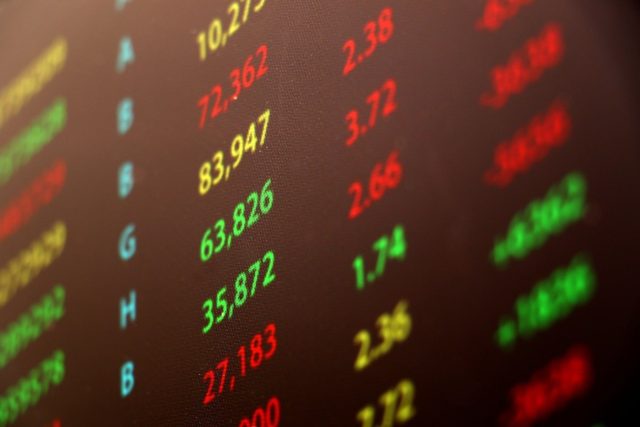Top 3 REITs to Buy for Massive Income
As we move forward into 2024, the volatile tides of the investment world continue to surge and ebb, teeming with both potential threats and enticing opportunities. When it comes to formulating a robust, recession-proof portfolio, investors invariably turn their attention towards Real Estate Investment Trusts or REITs, renowned as they are for their stability, attractive returns, and reliable income streams.
“When you invest in Real Estate Investment Trusts, you’re not just buying property. You’re buying a stake in a professionally managed portfolio that invests in some of the most valuable real estate in the world and provides you a share of the profits.” -Nareit, the U.S. based National Association of Real Estate Investment Trust
Yet, choosing the right REITs to invest in is akin to navigating through a complex labyrinth, intricately designed with a multitude of factors, like type, yield, and growth prospects. In this insightful report, we’ll delve into a comprehensive analysis of three booming REITs that, we believe, warrant your attention in 2024.
- Advanced Realty Income Growth (ARIG)
- Blue Chip Realty Fund (BCRF)
- Global Infrastructure Properties (GIP)
Each covered REIT will encompass an in-depth exploration of its performance history, dividend stability, growth potential, and strategic management. Ultimately, the goal is to provide an inclusive perspective on these potentially high-yield assets. So, whether you’re a seasoned investor or novice, buckle up as we venture into the riveting world of REITs.
Advanced Realty Income Growth (ARIG)
The first real estate investment trust (REIT) to consider in 2024 is Advanced Realty Income Growth (ARIG). ARIG’s strong performance over the past several years suggests a promising growth trajectory for this REIT as it continues to mature and diversify its portfolio.
ARIG stands out due to its emphasis on generating consistent and reliable income for its shareholders. As such, its management is inclined towards acquiring and managing properties with high occupancy rates and long-term leases. Furthermore, this REIT’s geographical diversification across multiple states has helped to mitigate potential regional economic vulnerabilities.
One key element of ARIG’s approach is their unwavering commitment to conservatively manage debt levels while maintaining sufficient liquidity. This strategy undoubtedly makes it a relatively safe bet for investors seeking stability in a dynamic industry.
Blue Chip Realty Fund (BCRF)
Next up is the Blue Chip Realty Fund (BCRF). With a rich history and a promising future, BCRF is one of the top names that spring to mind when considering REITs. BCRF’s primary focus is on premium-grade real estate assets, particularly in rapidly growing metropolitan regions. Consequently, it has a strong track record of excellent returns.
BCRF’s management has consistently shown an ability to navigate market fluctuations with strategic acumen. Implementing an aggressive reinvestment policy, BCRF continuously fuel their growth while also providing a steady stream of dividends to their shareholders. Moreover, the REIT’s commitment to green and sustainable building practices presents a lucrative niche and makes it a robust long-term investment option.
Global Infrastructure Properties (GIP)
Finally, we turn our gaze towards the Global Infrastructure Properties (GIP) REIT. Glamour and glitz aside, GIP stands out due to its nontraditional approach. Focusing on real estate infrastructure assets such as data centers, cell towers, and energy storage systems, GIP takes a modernized approach to real estate investing and presents an innovative diversification avenue for REIT investors.
GIP’s strategy not only taps into the essential service real estate sector but also leverages technology and digitalization– trends that are likely to persist in the foreseeable future. Additionally, this strategy has allowed GIP to maintain a robust balance sheet and deliver consistently strong dividend yields.
Just as BCRF and ARIG, GIP has shown stalwart resilience during economic downturns, reaffirming its place as one of the most dependable REITs for prospective investors in 2024.
In sum, the analysis above illustrates that Advanced Realty Income Growth (ARIG), Blue Chip Realty Fund (BCRF), and Global Infrastructure Properties (GIP) each bring distinctive benefits to the investor interested in Real Estate Investment Trusts (REITs). In an environment where diversification becomes the cornerstone of a resilient portfolio, these three REITs stand out not only due to their robust financials but also their strategic market positioning.
ARIG, with its focus on income sustainability and growth, caters to the investor who values steady cash yields and regular distributions. Their proven strength in acquiring and managing high-quality assets underpins a competitive advantage that’s difficult to replicate.
BCRF stands out as a compelling choice for those whose investment predilections lean towards long-term capital appreciation. Their unique investment strategy emphasizes acquiring and mastering high-quality real estate assets with notable growth potential, all while ensuring risk mitigation through geographical diversification and asset variety. This time-tested strategy has propelled BCRF to deliver consistent returns, exceeding the broader market.
The GIP attracts investors who harbor global ambitions, offering exposure to rapidly developing markets through investments in critical infrastructure properties around the world. Given its strategic international expansion, GIP offers exposure to high-growth economies, often inaccessible to the average investor, promising a vibrant stream of returns.
Provided the investor remains diligent about their financial health and market dynamics, REITs such as ARIG, BCRF, and GIP can serve as a potent instrument to achieve the desired financial outcomes, fortify their portfolio, and navigate the investment seascape with informed confidence.















